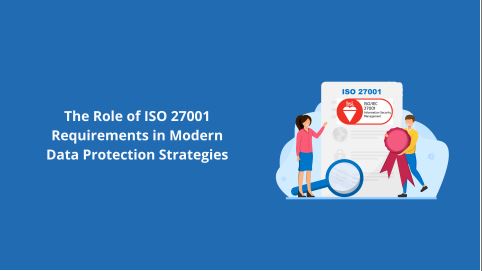8 Ways Laboratory Information Systems Are Advancing Healthcare
Laboratory Information Systems (LIS) are specialized software solutions designed to manage and process data within medical and clinical laboratories. These systems streamline various lab processes, including patient registration, order entry, specimen processing, result analysis, and report generation. Healthcare has always been a dynamic field, pushing the boundaries of what’s possible in medicine and patient care. With the advent of new technologies, we’re witnessing a shift in how healthcare services are delivered and managed. Central to this transformation is the role of companies like NovoPath, whose LIS systems are developed to make lab processes easier, more streamlined, and more accurate.
Enhancing Laboratory Efficiency through Innovative Software
NovoPath aims to optimize healthcare through laboratory management solutions with customized workflows. By automating routine tasks, NovoPath’s solutions enable lab professionals to focus more on critical analytical work, reducing the margin of error and enhancing the precision of diagnostic reports.
The efficiency of NovoPath’s systems doesn’t merely lie in speed but also in the accuracy they bring to complex laboratory procedures. It’s a multifaceted efficiency — one that touches upon every aspect of the laboratory’s operations, from sample processing to data analysis and reporting. In essence, NovoPath’s technology ensures that laboratories function like well-oiled machines, with each part working in tandem to deliver faster, more reliable patient outcomes.
Seamless Connectivity in Diagnostic Laboratories
The ability to effortlessly plug into over 150 existing EMRs transforms the data exchange landscape, ensuring that critical patient data is transferred securely and efficiently where it needs to go. NovoPath’s commitment to connectivity means that laboratories can uphold the highest data security standards while maintaining strong communication channels with healthcare providers.
This kind of seamless integration is crucial in today’s healthcare ecosystem, where the timely sharing of accurate patient data can significantly influence clinical decisions and, by extension, patient outcomes. You can learn more at Novopath.com regarding how LIS accommodates end-to-end, seamless connectivity for secure data exchange.
Advancements in Anatomic Pathology through Technology
Anatomic pathology, a discipline at the heart of disease diagnosis, has been revolutionized through the integration of technology. NovoPath’s sophisticated software solutions have modernized this field, bringing about a new era of precision and efficiency. The meticulous examination of tissue samples, a complex and delicate task, has been vastly improved, allowing pathologists to deliver more definitive diagnoses.
These technological advancements mean that diseases can be detected earlier and with greater accuracy. For patients, this translates to quicker treatment plans and better prognoses. NovoPath’s software empowers pathologists with tools that refine their craft, leading to better results in detecting and understanding various diseases.
The Comprehensive Nature of Anatomic Pathology LIS Software
NovoPath’s Anatomic Pathology LIS offers a comprehensive, powerful platform that connects every facet of a diagnostics lab. It’s not just about having a centralized system; it’s about creating a cohesive, real-time, updated environment that empowers every team member. The platform is designed to be intuitive and accessible, ensuring that regardless of where a team member is, they have the right tools at their disposal to diagnose cases swiftly and with utmost precision.
By providing such a versatile platform, NovoPath ensures that the entire diagnostic process, from specimen collection to result distribution, is smooth and error-free. The outcome is a significant enhancement in the quality of patient care, supporting the belief that technology is a crucial part of better healthcare.
Improving Patient Outcomes with SaaS LIS
NovoPath’s LIS is aimed towards the betterment of patient outcomes. Their award-winning SaaS Laboratory Information System (LIS) demonstrates this, used by hundreds of customers to refine operations and improve diagnostic accuracy. This technology is not just about improving the bottom line for healthcare providers; it’s about making a tangible difference in people’s lives daily.
Every feature and every update in NovoPath’s LIS is designed with the end goal of patient welfare in mind. It’s a tool that not only enhances the capabilities of healthcare providers but also instills confidence in patients, knowing that their diagnoses are the result of meticulous, technology-driven processes.
Personalizing Patient Care with Advanced Diagnostics
The landscape of healthcare is rapidly changing with the personalization of patient care through advanced diagnostic techniques. NovoPath’s latest release, NovoPath 360, exemplifies this progress. It enables clients to expand their diagnostic capabilities significantly, aiding in the development of personalized therapies.
With techniques such as FLOW, FISH, Karyotype, Morphology, Cytogenetics, NGS, Hematopathology, and Lab Developed Tests, NovoPath provides a strong platform for labs to enhance their diagnostic precision. This precision, in turn, supports the delivery of care tailored to the individual needs of patients, marking a new era in patient-centric treatment strategies.
Streamlining Diagnostic Processes with Digital Reporting
The integration of digital solutions in healthcare has led to significant advancements in how medical information is managed and disseminated. NovoPath is at the forefront of this transformation with NovoPath 360, which offers streamlined digital reporting capabilities.
This platform allows pathologists to generate detailed and standardized diagnostic reports electronically. Such functionality eliminates the need for physical paper-based reports, enabling reports to be securely accessed, reviewed, and signed off remotely. This innovation not only streamlines the diagnostic process but also enhances the speed and security with which medical data is handled, ultimately contributing to a more agile and responsive healthcare system.
Enhancing Precision Medicine with Integrated Workflows
Precision medicine, which tailors medical treatment to the individual characteristics of each patient, has become a cornerstone of modern healthcare. NovoPath has contributed to this field by releasing enhanced integrated workflows for genetic and molecular testing. With NovoPath 360, laboratories can produce comprehensive, easy-to-read diagnostic reports. These reports support the advancements of precision medicine, allowing healthcare providers to offer care that is more accurate and personalized than ever before. By integrating these sophisticated workflows, NovoPath is enabling more effective utilization of genetic information, leading to targeted treatment approaches and improved patient outcomes.
Conclusion
Through their innovative software, we glimpse a future where healthcare is more accurate, more secure, and, ultimately, more human-centered. The integration of such technology is not just a convenience; it’s a necessity in our pursuit of excellence in healthcare. As we embrace these technologies, we step into a new era of healthcare where every patient benefits from the precision, speed, and reliability that these innovations bring to the table.



















